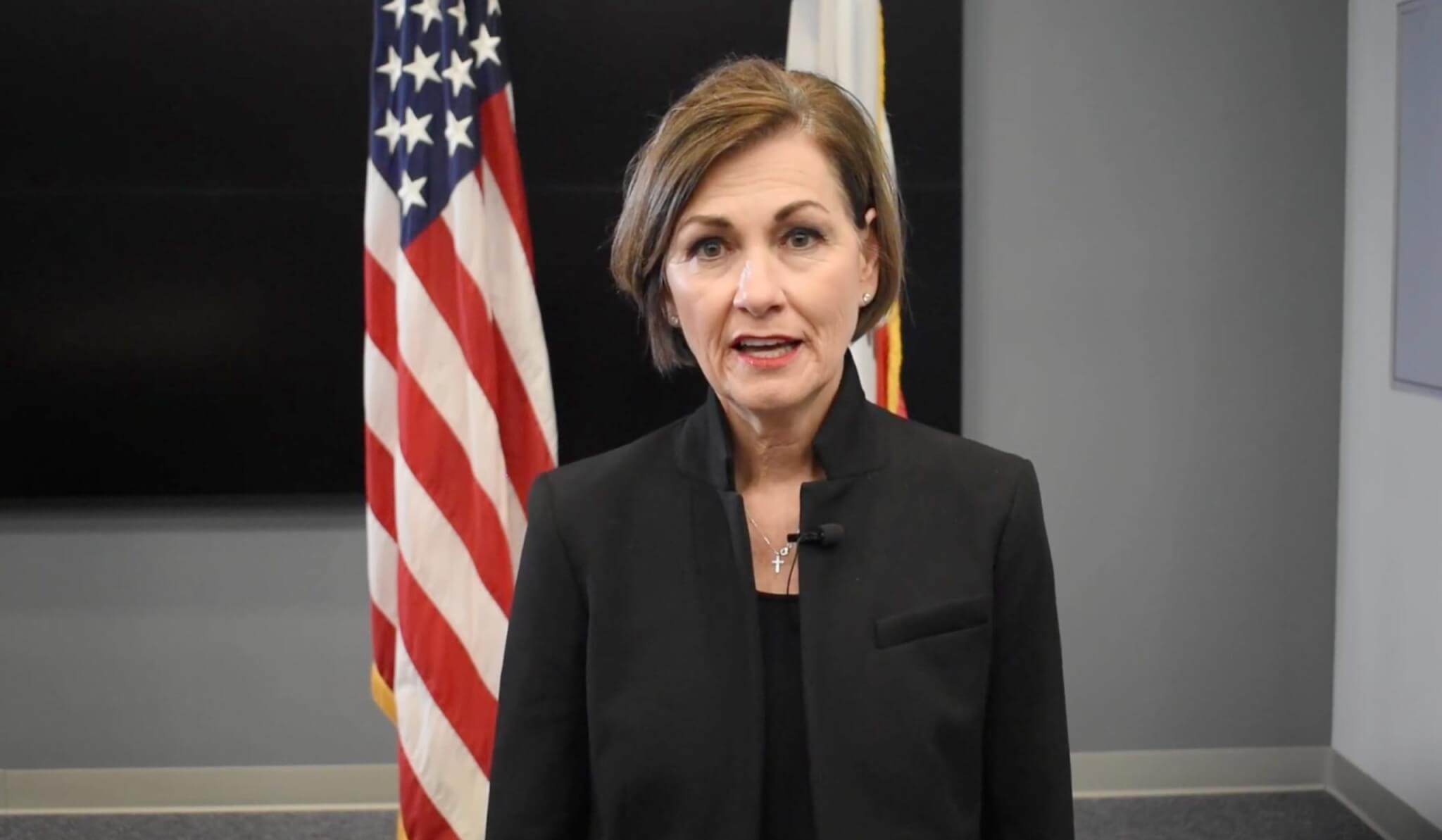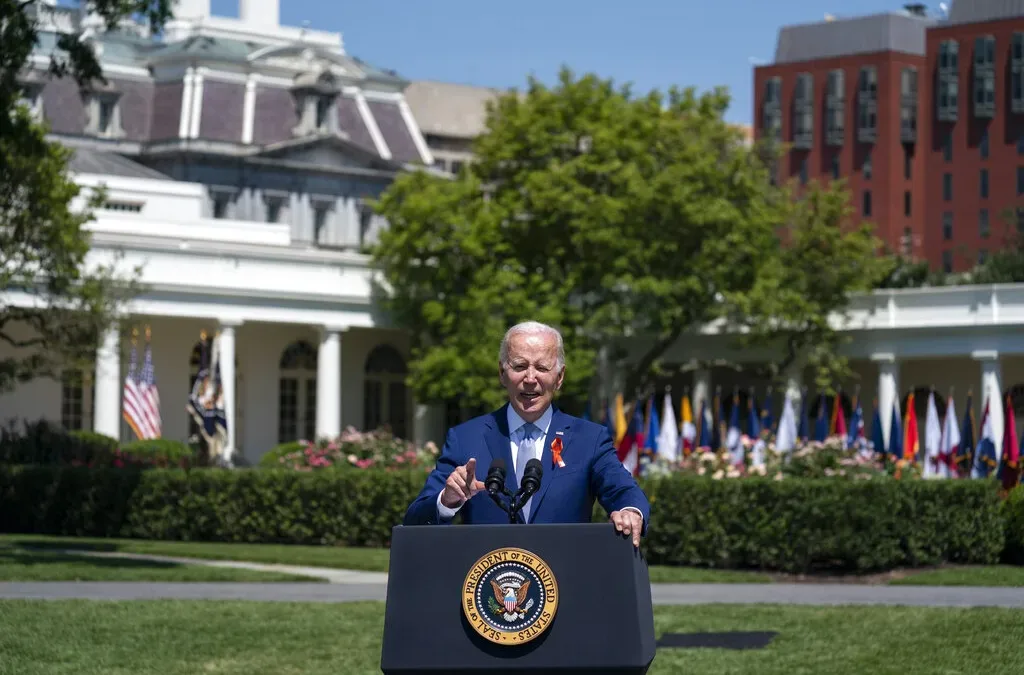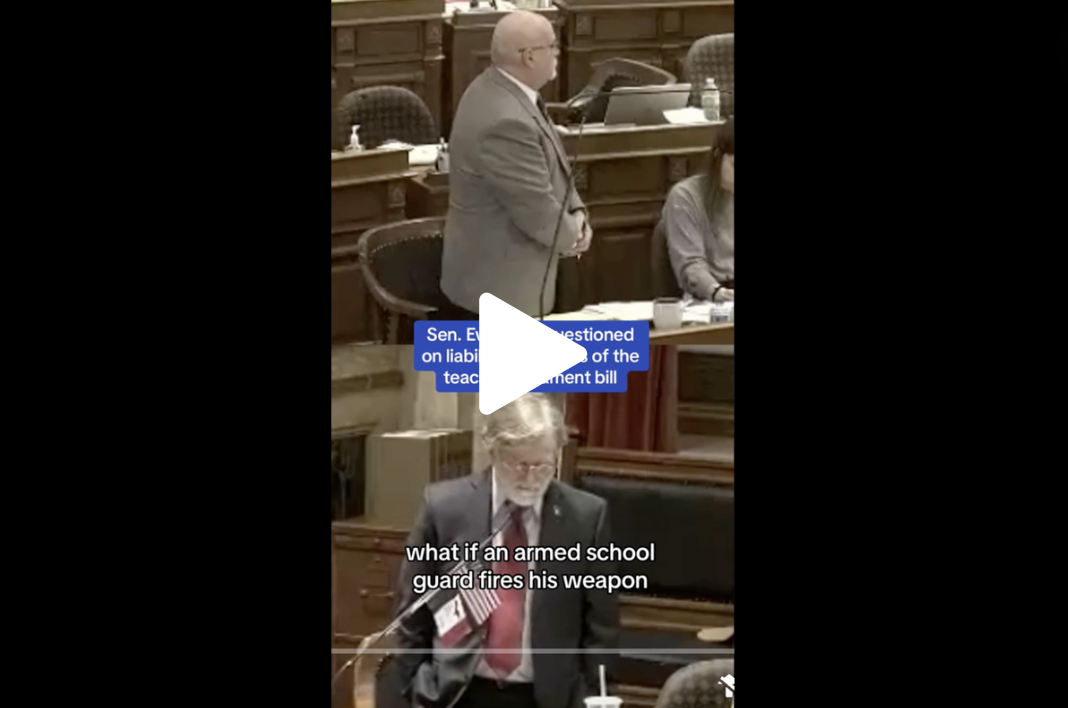
“I’m highlighting this information not to downplay the pandemic,” Gov. Kim Reynolds said yesterday as she downplayed the pandemic.
At her Tuesday press conference, Reynolds previewed how her administration would try to falsely convince Iowans that the coronavirus outbreak in the state was under control. As concerns over the state’s lackluster safety precautions in their school reopening mandates grow, the governor is turning her attention to finding new ways to spin the numbers.
“We all know COVID-19 is a serious situation and we’re appropriately managing it as such. But the headlines would have you believe otherwise,” Reynolds said. “As the governor, I have the responsibility to not react to partially-informed headlines or news stories, but to base information based on data.”
What data is that, exactly? The positivity rates — the percentage of positive cases to tests conducted — that are a key part of Reynolds’ plan to limit any school from shutting down this fall, which has parents and educators particularly furious over Iowa’s “return-to-learn” plan. A district’s county (or counties) must have a 15% positivity average for two weeks, as well as a 10% student absenteeism for two weeks to be able to request going online-only for a short time.
[inline-ad id=”3″]
In recent weeks, Reynolds has increasingly touted Iowa’s falling positivity ratio for coronavirus tests and cases, as well as the hospitalization rate. The state’s total cases rose back up to near-peak levels in late July, even as the positivity numbers held steady due to increased testing, before dipping a little in August. Hospitalizations and ICU usage are actually creeping back up again.
At her press conference, Reynolds ticked through each month’s worst case number days and the corresponding positivity ratings as a way to argue that Iowa’s situation is markedly better. Oddly enough, she actually perfectly laid out why the positivity rating is so flawed.
Here’s the numbers she gave:
April 29: Highest one-day positive cases for April was 809 cases out of 2,961 tests for a 27.3% positivity rating.
May 26: Highest positive cases for May was 870 cases out of 4,397 tests for an 18.4% positivity rating.
June 25: Highest positive cases for June was 504 cases out of 7,108 tests for a 7.1% positivity rating.
July 10: Highest positive cases for July was 754 cases out of 7,546 tests for a 10% positivity rating.
(During the press conference, Reynolds said 703 cases for July 10, but the website for that day says 754, which matches up with the positivity rate she gave — she may have just read it wrong off her paper.)
Do you see the problem here?
[inline-ad id=”2″]
Positivity is number of positive cases divided by the number of tests. So, yes, the worst April day of 809 had a much higher 27.3% positivity rating than the worst July day of 754, which was 7.1% positivity, but that’s because way more tests were being done in July. Lots of Iowans were still infected and sick.
This is actually the exact same argument President Donald Trump was making in his widely-panned interview with Jonathan Swan of Axios.
“You can’t do that,” Trump protested when Swan pointed out that the cases and deaths in the U.S. per capita far exceeded other countries. “You have to go by the cases. The cases are there … And we have cases because of the testing.”
[inline-ad id=”1″]
But all of this ignores the fact that more cases aren’t simply a result of testing, they are a result of Iowans being infected with the virus. And testing often follows to an area where there are clear outbreaks.
And that’s why Reynolds leaning on this metric is so dangerous. For one, it misrepresents the public health danger in a county.
A clear pattern has played out again and again in Iowa: a county sees a spike in cases; a Test Iowa site is deployed to the county; news coverage of the spike convinces everyone in town who has a cough that they have the virus, and they go get tested; many tests turn out negative, even as total cases continue to rise. But because of the influx of testing, the overall positivity percentage drops.
So, you have a community with a worsening outbreak that’s now being told by the state that, actually, they’re getting better at the very moment things are getting worse.
[inline-ad id=”6″]
What’s particularly concerning is that Reynolds and the Iowa Department of Public Health have the ability to juke the stats if they want to in order to avoid possible school shutdowns. If a county’s positivity rating is inching up too much, they can flood the county with more testing, driving down the percentage of cases to tests.
Of course, more testing is a very good thing, especially if a county is experiencing an outbreak. But if the results of the data are being manipulated in order to ignore the seriousness of the situation, that’s a problem. Which is exactly why this shouldn’t be a metric used on which school health safety hinges.
We saw a similar thing play out in absurd fashion back in April with the Regional Medical Coordination Center metrics. A key factor in the RMCC system, which determined whether large regions of Iowa should implement further restrictions, was the percentage of COVID-19 cases that required hospitalization.
[inline-ad id=”7″]
Southeast Iowa saw a huge outbreak at packing plants and nursing homes in early April, skyrocketing their total positive numbers. The Southeast Iowa region’s total case numbers doubled in a week, but the RMCC system ended up rating the area as more safe because hospitalization percentages fell. That’s because increased testing caught more asymptomatic people, those who likely never would have ended up in a hospital. But there were still far more infected people in local communities that helped the virus spread there even more.
Reynolds is now planning to distort those hospitalization numbers themselves. Also on Tuesday, she announced the state would soon break out hospitalizations between people who were admitted primarily because of COVID-19 and those who tested positive after going to the hospital for a different issue. She explained that on Monday there were 136 Iowans admitted to a hospital specifically for COVID-19. Over 100 others were admitted for other reasons and subsequently tested positive.
On one level, you can see what they’re going for. If someone who is perfectly healthy gets in a car accident, breaks their arm, goes to the hospital and tests positive for COVID-19 but has no symptoms of it, that’s different than someone who was admitted with severe breathing problems caused by the virus.
[signup_form]
But where’s the line they’ll draw there? If someone gets admitted to a hospital for a blood clot, tests positive, and then has to stay in the hospital longer because coronavirus symptoms kick in afterward and worsen, should that not count as a hospitalization? Is there going to be some retroactive measure to reclassify that? And what exactly counts for a coronavirus admittance?
With their repeated deceptive actions over the past five months, Reynolds and IDPH have not earned the trust of Iowans to believe that this will be accurately reported either.
And what’s even the point of all that? People are still infected and sick with the coronavirus. It seems the only real outcome will be to give Iowans skeptical of science another excuse to not take the virus seriously, thus endangering their communities. “It’s not a big deal, most the people in the hospital are there for other reasons,” they’ll say.
Throughout this entire crisis, Reynolds and IDPH have treated the pandemic more as a public relations issue instead of a public health one. Iowans and reporters should be very cautious about accepting any of the numbers behind this new strategy of Reynolds to downplay the very serious, ongoing emergency that Iowa is facing.
by Pat Rynard
Posted 8/5/20
Iowa Starting Line is an independently-owned progressive news outlet devoted to providing unique, insightful coverage on Iowa news and politics. We need reader support to continue operating — please donate here. Follow us on Twitter and Facebook for more coverage.
Politics

Biden announces new action to address gun sale loopholes
The Biden administration on Thursday announced new action to crack down on the sale of firearms without background checks and prevent the illegal...

Biden cancels student loan debt for 2,690 more Iowans
The Biden administration on Friday announced its cancellation of an additional $7.4 billion in student debt for 277,000 borrowers, including 2,690...
Local News

No more Kum & Go? New owner Maverik of Utah retiring famous brand
Will Kum & Go have come and gone by next year? One new report claims that's the plan by the store's new owners. The Iowa-based convenience store...

Here’s a recap of the biggest headlines Iowa celebs made In 2023
For these famous Iowans, 2023 was a year of controversy, career highlights, and full-circle moments. Here’s how 2023 went for the following Iowans:...






